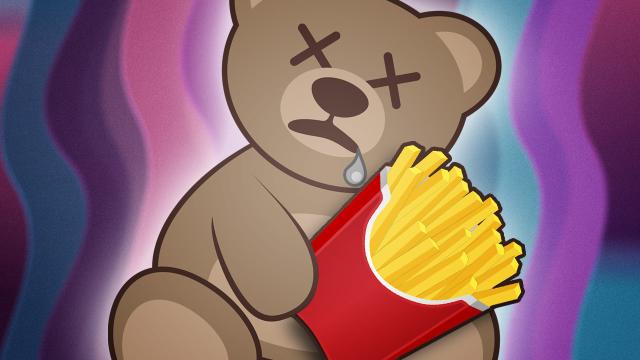Carb-heavy meals are notorious for making you hungry and cranky later in the day, not to mention gaining weight. But if you really want to eat your pasta and potatoes, you can make the meal easier for your body to deal with by adding other food to it. Pancakes and bacon are a better bet than pancakes alone.
Pictures: OpenClips
To start, let’s talk about what carbs actually are:
- Sugars mostly include glucose, fructose, and sucrose, and table sugar (which is made of glucose and fructose stuck together in pairs). There are a few other sugars, like lactose, that you may have heard of.
- Starch, the stuff in bread and potatoes and rice, is actually made of sugar: just glucose molecules chained together. After digestion, it turns into a pile of glucose (but more on that in a minute.)
- Fibre is also made of sugars, but they’re connected in ways that are difficult for our body to break apart. That’s why there are so many bacteria living in our large intestine: they digest the fibre that we can’t.
“Carbs” include all three of these things, but we often use the word to refer to starch. The term “complex carbs” is even more misunderstood, and often used to refer to fibre, but to a biochemist or nutritionist, both starch and fibre are “complex” because they’re made of lots of sugar molecules stuck together.
What Happens to Carbs After You Eat Them
Starches aren’t digested until after a meal has left your stomach and entered the small intestine. There, the starch is broken up into its component sugars, and the sugars (along with the other components of your meal, like the amino acids from protein) can be absorbed into your bloodstream.
Here’s the problem: If all you ate was sugar and starch — let’s say you’re having toast with jelly and juice, or pancakes and syrup — that means a lot of sugar will get absorbed all at once, pretty quickly after you eat it. That raises your blood sugar fairly high (which is especially bad if you’re diabetic), and your pancreas has to use a lot of insulin to send signals to your other body cells — including fat, muscle and liver — to suck up the sugar already and get it out of the bloodstream. Sometimes, that response is overkill, and blood sugar can drop a little too low, leaving you shortly after mealtime with a “carb coma” or afternoon slump: you may be tired, cranky or hungry.
If the symptoms are mild, your body may be doing just fine at tolerating high-carb meals. But if your “carb coma” is extreme or annoying, or if you and your doctor are concerned about your blood sugar for health reasons, you may want to add something to those carb-heavy meals.
How to Cut the Carb Impact on Your Body
If you instead eat those pancakes with a side of bacon, or swap the juice for milk and the jelly for peanut butter, you’ll be eating a mixture of carbs with other components. The protein and fat slow down how quickly your intestinal cells can shovel sugar into your bloodstream.
As a result, even though the same amount of sugar is being absorbed, it’s happening over a longer span of time, and your blood sugar level at a given moment will be lower than the spike you got from the pancakes-only breakfast. Your sugar levels are likely to ramp back down rather than plummet.
We say that meals like this have a lower glycemic load, a number that reflects how high your blood sugar is likely to rise after you eat it. A related concept is glycemic index, but that’s less useful because the numbers you can look up on charts like this one are based on grams of carbohydrate rather than realistic serving sizes. So the charts are comparing, say, a slice of bread to a bucket of watermelon.
If you’re looking up glycemic load, don’t forget that you digest meals, not foods. Sweet potatoes have a lower glycemic load than white potatoes, for example, but the carbs in a loaded baked potato will be absorbed slower than those in a sweet potato casserole with brown sugar and marshmallows.
Instead of being a slave to glycemic load calculations, it’s better to remember a few rules of thumb:
- Starch and sugar are digested quickly, but
- Fat, protein and fibre slow down digestion.
So if you want to avoid blood sugar spikes and slumps, add plenty of things in the second category — fat, protein and fibre — to meals that already contain carbs. When you’re making a smoothie, for example, include nut butters or protein powder, and go light on the juice. If you’re ordering dinner, slow down your pasta with a creamy sauce and a side salad. And if you’re eating pancakes, don’t forget the side of bacon.

Comments